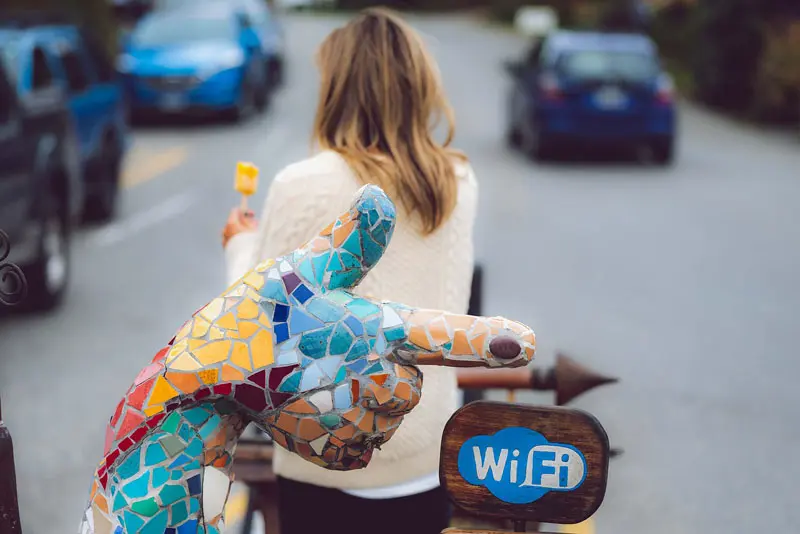The countless facilities and business premises that offer free WiFi to their customers cannot all be wrong. Providing free WiFi attracts customers, increases sales, encourages positive reviews, and improves customer satisfaction. That’s all good. However, giving customers free WiFi doesn’t guarantee positive outcomes. Things can go wrong and negate the very reason for free WiFi.
By looking out for these potential pitfalls and putting in place the requisite controls to prevent them, you can maximize the returns on free customer WiFi. Here are the things you must do to increase the chances of customer WiFi success.
1. Fast and Reliable
It may be a free service but that doesn’t mean you can get away with providing a lackluster experience. In fact, slow and erratic WiFi is worse than having no customer WiFi at all. Low-quality WiFi is a blot on your business reputation and renders pointless any investment you have made toward offering connectivity. A connection that’s virtually non-existent, buffers endlessly, or excruciatingly slow will lead to customer frustration which does no favors to your sales prospects.
Commit to providing good quality WiFi. Listen to any customer complaints about the connection and address them promptly. If connectivity is slow or spotty, you can use a wireless analyzer to find out why. It could be outdated firmware, an old router, the router’s location, frequency challenges, or interference from a powerful network nearby. Whatever the cause, work toward resolving it in the shortest time possible.
2. Ensure Adequate Bandwidth
Bandwidth is one of the primary causes of slow speed. You must accurately estimate beforehand the bandwidth you’ll need based on the anticipated number of concurrent customers connected and the nature of their browsing.
One way to manage capacity is to block access to sites that gobble up bandwidth such as video streaming sites and movie torrent portals. It’s a bit of a gamble given how encompassing video sites like YouTube (world’s second most popular website, the most popular iPhone app and the second most popular Android app) have become. Ergo, you may be better off permitting video and streaming sites but blocking porn, illegal sports streaming sites, and other similar sites that won’t add any value to your brand.
3. Secure
To protect both confidential customer data and your own business information, your WiFi connection must be secure. Free WiFi must not be provided with an ‘anything goes’ mindset. Preventing customer data from being breached is good for your business reputation and also protects you from any lawsuits that may emerge following any such breach.
Start with your router and ensure its security protocol is calibrated to the highest possible security setting. Older protocols such as WEP and WPA have known weaknesses and should be considered risky. WPA2 should suffice. If your WiFi router is incompatible with WPA2, consider upgrading the firmware or better yet, upgrading your router.
4. Separate Customer and Employee Access
Your employees and customers shouldn’t use the same WiFi access point. Allowing employee and customer traffic to mix introduces threats to the confidentiality of data. Even if your company’s network seems adequately secured from threats emanating from the public Internet, anyone using the same access point as your staff could potentially peek into your organization’s confidential files.
At the minimum, your business should have two distinct access points. The first would be a highly secured one that’s walled off from customers and is only available to your employees. The second is the customer-facing one. Alternatively, you could establish a completely separate hotspot for customers that is wholly unconnected to your network infrastructure. Ideally, it shouldn’t even use the same internet service provider as your business network.
5. Beware of Squatters
Free WiFi is a magnet. That’s both a good thing and a bad thing. While it could draw in customers and increase sales, it will also attract individuals who have no intention of buying your product but want to enjoy the free Internet access. For a restaurant with free WiFi, an example of a squatter would be someone who buys coffee worth $2 but spends the entire day hogging precious table space.
To keep squatters at bay, develop and implement some rules. For instance, you could require a minimum purchase value before WiFi use is permitted, you could place a ceiling on how long one could use the free WiFi after a qualifying purchase, you could designate certain areas as WiFi-free to ensure customers who are only interested in buying your product aren’t inhibited, or you could turn off WiFi during rush hours.
Giving customers free WiFi can be good for business. Applying these tips will ensure it works in your business’ favor.













